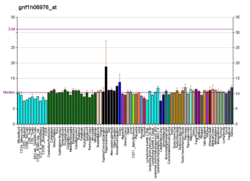| DPP10 | |||||||||||||||||||||||||||||||||||||||||||||||||
|---|---|---|---|---|---|---|---|---|---|---|---|---|---|---|---|---|---|---|---|---|---|---|---|---|---|---|---|---|---|---|---|---|---|---|---|---|---|---|---|---|---|---|---|---|---|---|---|---|---|
| |||||||||||||||||||||||||||||||||||||||||||||||||
| Identifiers | |||||||||||||||||||||||||||||||||||||||||||||||||
| Aliases | DPP10 , DPL2, DPPY, DPRP-3, DPRP3, dipeptidyl peptidase like 10 | ||||||||||||||||||||||||||||||||||||||||||||||||
| External IDs | OMIM: 608209; MGI: 2442409; HomoloGene: 41400; GeneCards: DPP10; OMA:DPP10 - orthologs | ||||||||||||||||||||||||||||||||||||||||||||||||
| |||||||||||||||||||||||||||||||||||||||||||||||||
| |||||||||||||||||||||||||||||||||||||||||||||||||
| |||||||||||||||||||||||||||||||||||||||||||||||||
| |||||||||||||||||||||||||||||||||||||||||||||||||
| |||||||||||||||||||||||||||||||||||||||||||||||||
| Wikidata | |||||||||||||||||||||||||||||||||||||||||||||||||
| |||||||||||||||||||||||||||||||||||||||||||||||||
Inactive dipeptidyl peptidase 10 is a protein that in humans is encoded by the DPP10 gene. [5] [6] [7] Alternate transcriptional splice variants, encoding different isoforms, have been characterized. [7]





